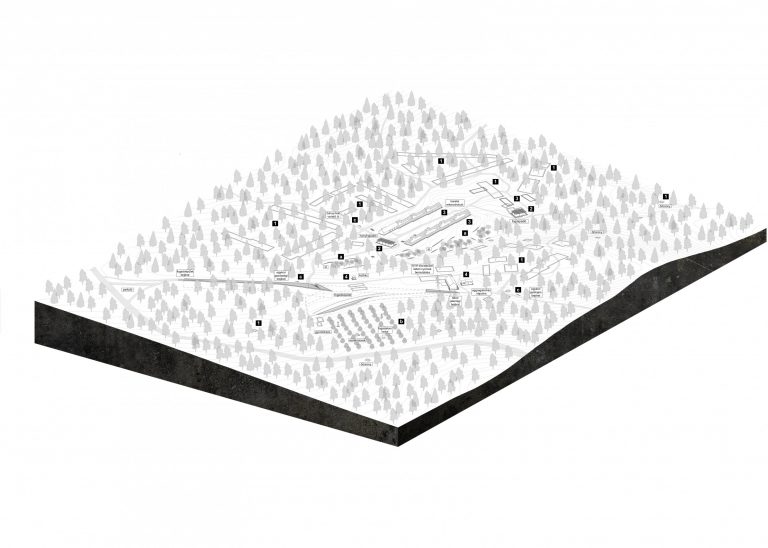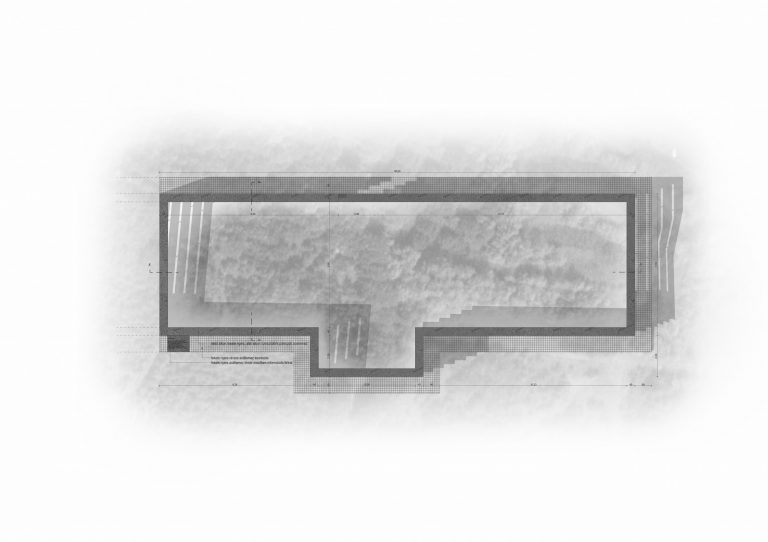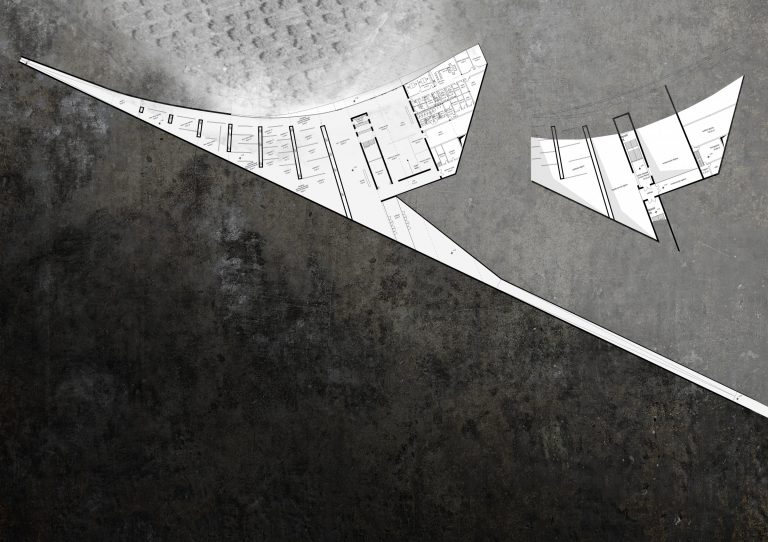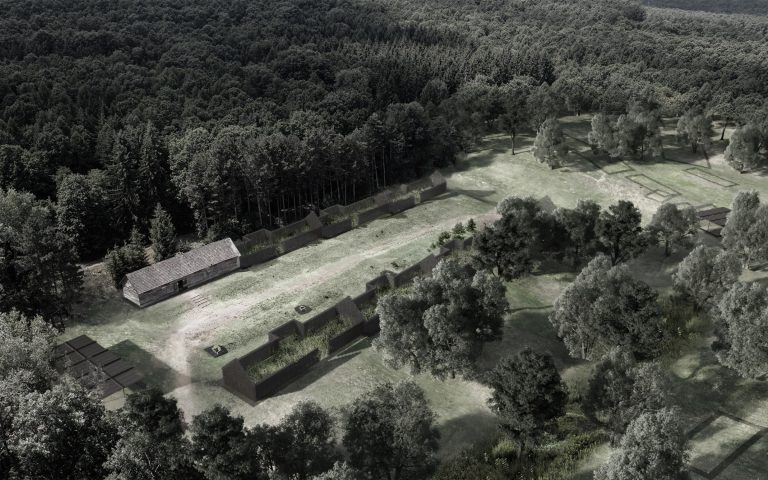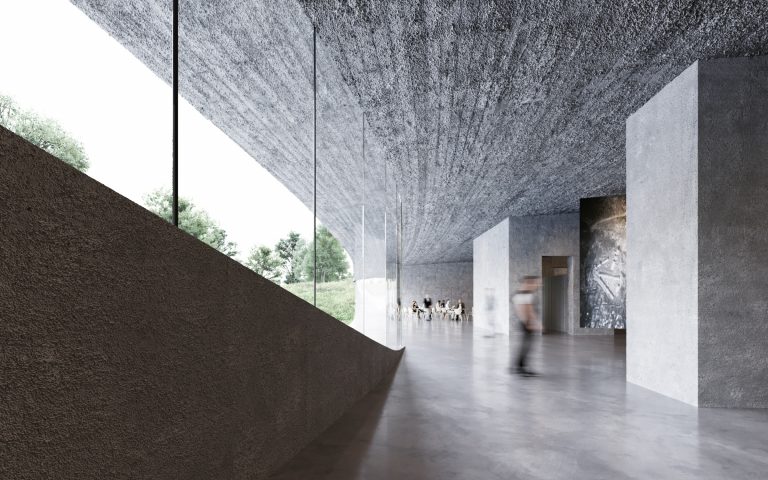Recsk National Memorial Site
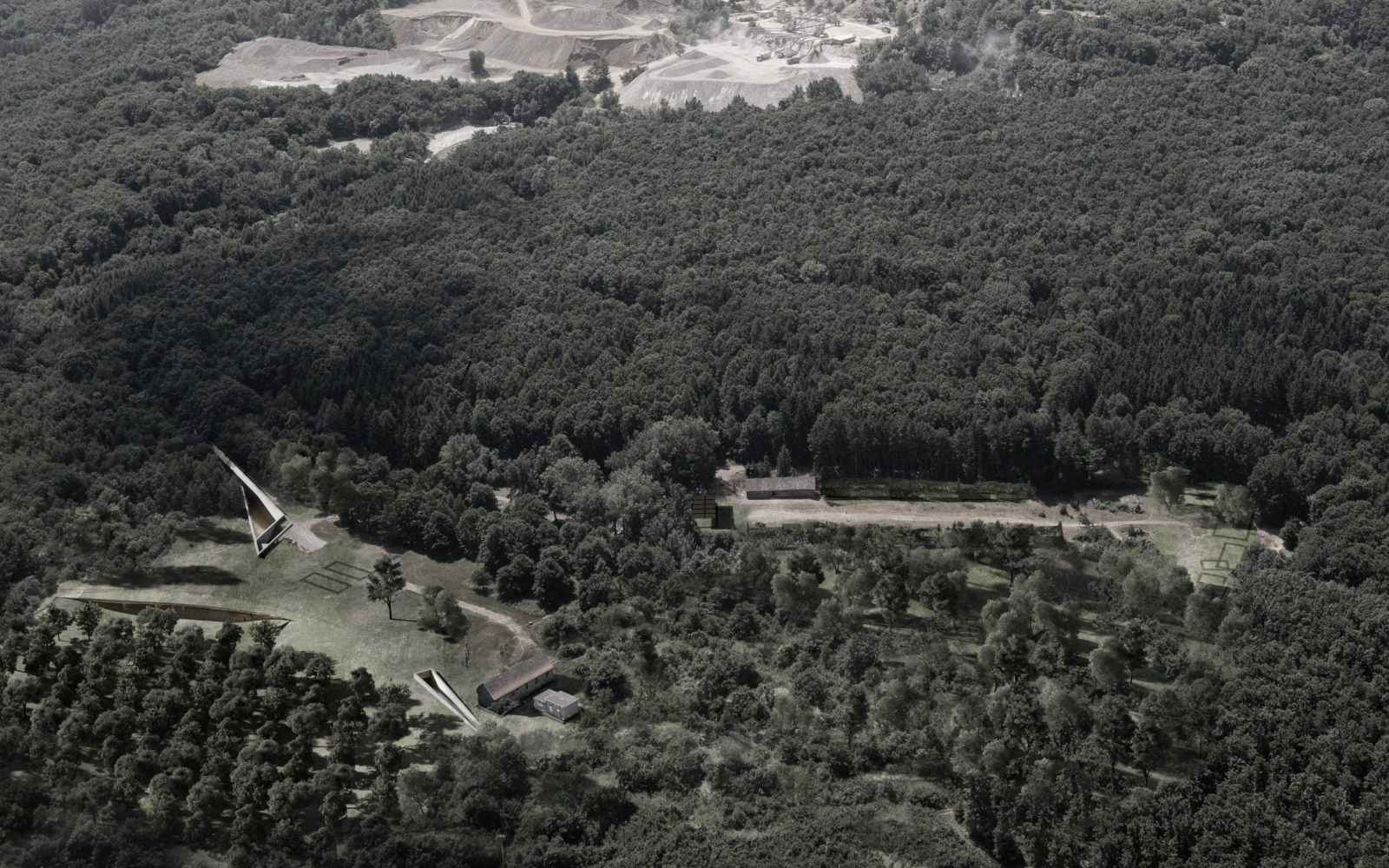
2021
National competition for the design of the National Memorial Site on the area of the former labour camp of Recsk, mention
Designers: Deichler Jakab Stúdió, Hetedik Műterem
Architects: Tímea Deichler, Dániel Jakab, Levente Szabó, Balázs Biri, Anna Breuer, Bernadett Kolossváry, Regina Kovács
Landscape architecture: Edina Massány, Szilvia Weisz (Open air design)
Visualization: Bence Falussy
The former labour camp of Recsk has been a traumatic place in our collective memory, sometimes more strongly, sometimes more faintly, ever since its construction, its operation, its closure and its silencing. Memory cannot be shaped by the mere will to remember. It is our responsibility, therefore, to allow it to continue to evolve, to reinterpret the complex layers and patterns left over from the past and to allow them to be reconstructed by visitors, without any strong shifts, ruptures or breaks.
Our project does not overwrite, erase, restore or pretend that the camp has not been dismantled or concealed, that the interpretive and commemorative interventions of the period after the regime change are not part of the current reality of the site. Our proposal doesn’t intend to obliterate existing layers in this place with new built layers. Our concept shows, interprets and highlights all that was once certainly or presumably the physical reality of this place as evidence of a dark period in our history, offering the opportunity contemporary men to trace it and to work on remembrance. Our system of gestures thus invites us to do physical-mental work on memory.
Paradoxically, there are hardly any physical traces of the site that would create a direct, perceptible bridge between the former camp and the present landscape environment as an in situ reality, yet the visitor perceives a strong sense of site. Therefore, the interpretation and enhancement of these traces, the highlighting preservation of the existing remains and in no way obscuring or overwriting them, is a primary element of our concept. Our elements range from the evocation of the barracks, to the marking of the now forgotten extensive building stock, to the protection and exhibition of the remaining fragments. The strength and extent of the interventions at each point on this imaginary scale is proportional to the degree of certainty of the elements of the former camp.
We intend to interweave the elements of the architectural, landscape architectural, exhibition-dramaturgical and the network of signs that make the traces of the former camp perceptible during the visit, which are stronger or weaker, and which are thus able to convey an elementary power which act on all our senses.
We see this kind of site-specific behaviour as a guarantee worthy of the site’s importance, that our fragmentary knowledge of the past, which is constantly being reinterpreted, can be assembled into a living and testifying memory for future generations.
